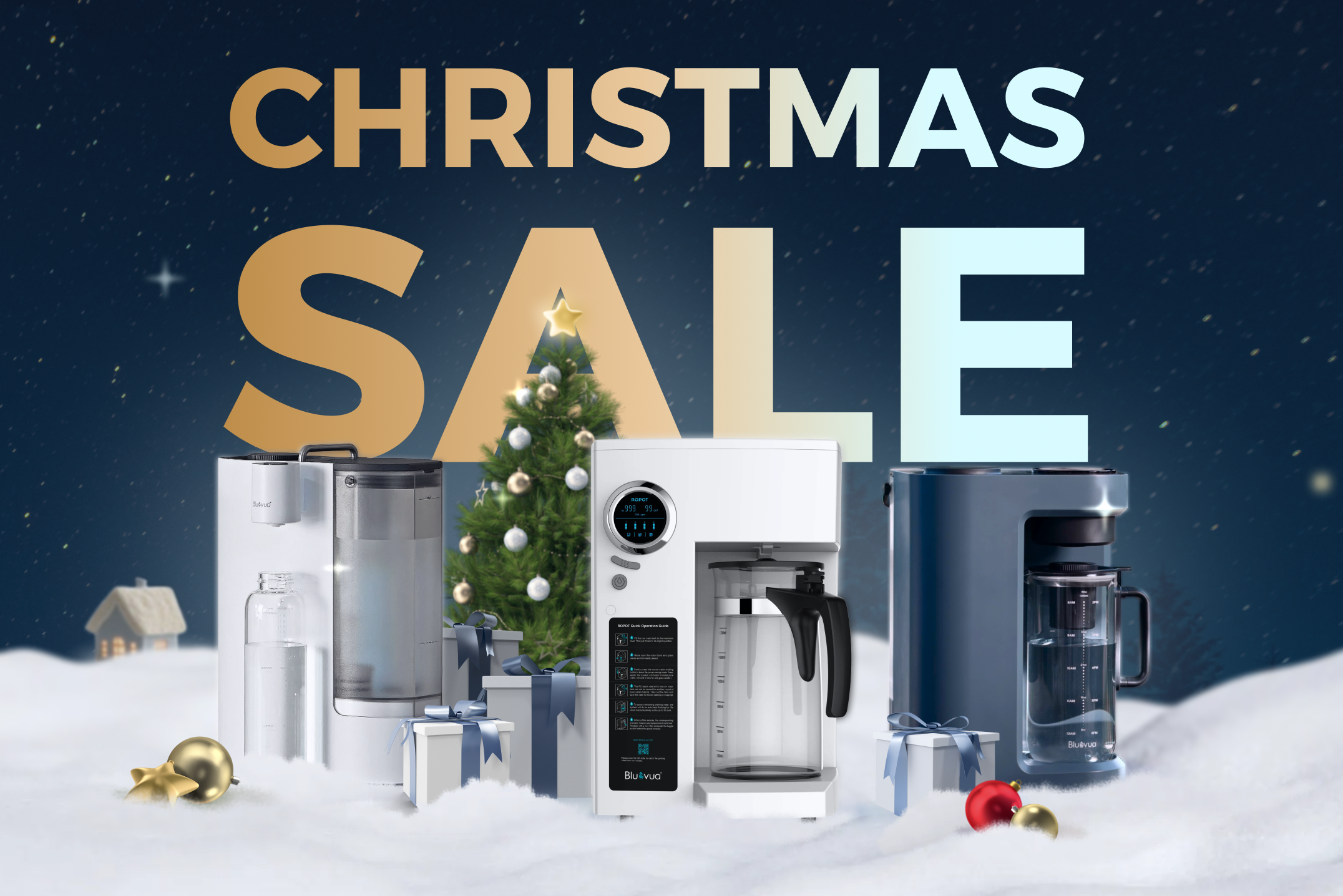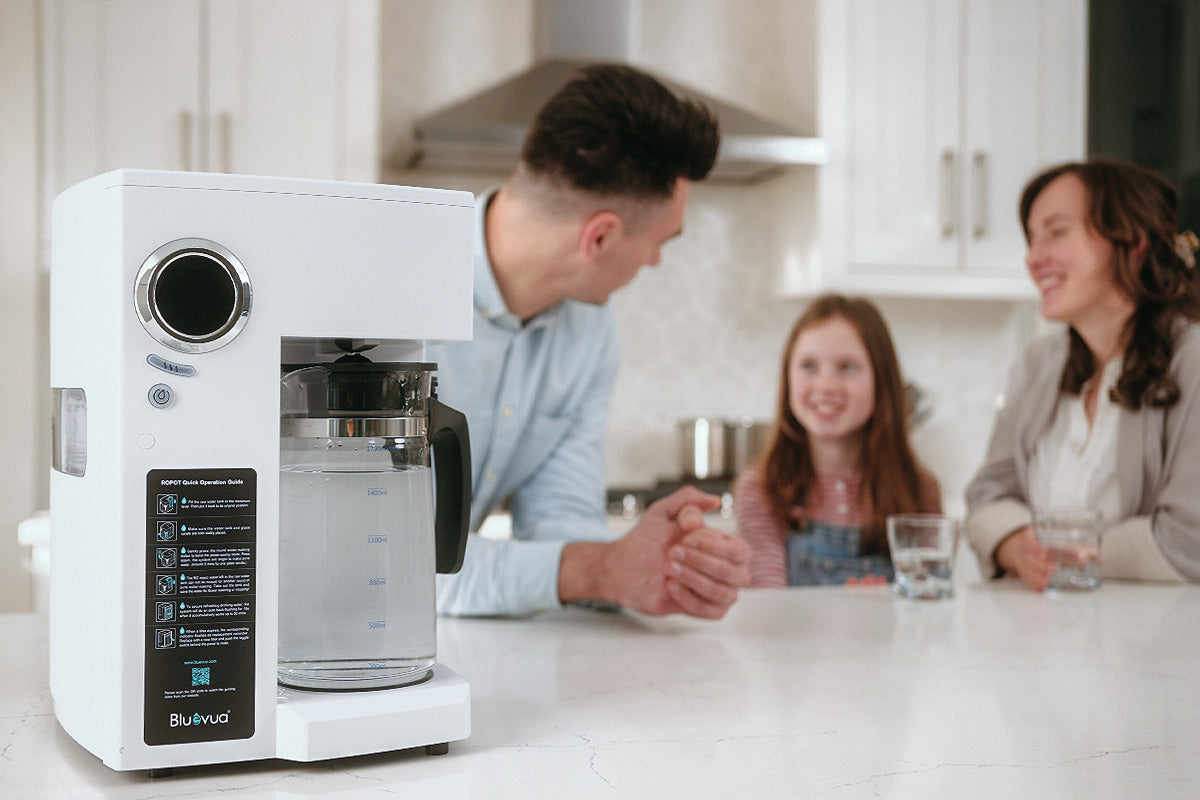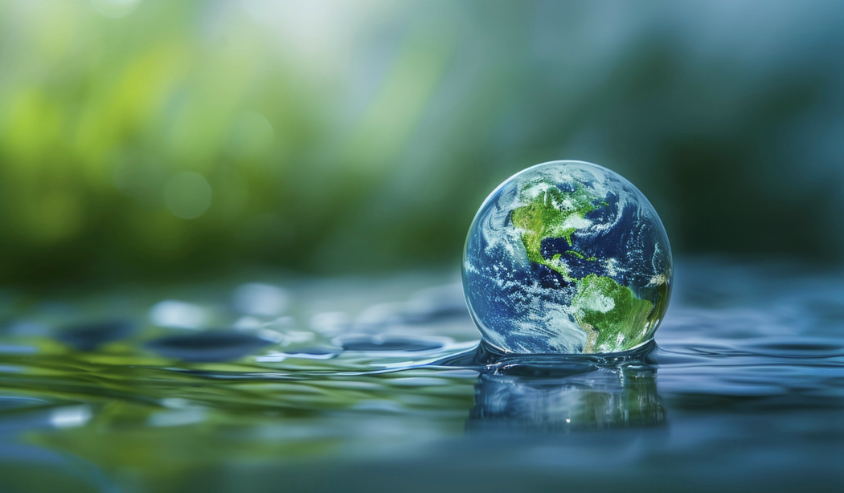Staying hydrated is key to a great trip, but one bad sip of water can bring your adventure to a screeching halt. Whether you're jet-setting across the globe or road-tripping close to home, you can't always count on the tap water being safe.
The good news? You don't need to be a scientist to spot trouble. With a few smart tricks (and the right gear), you can avoid tummy troubles and stay confidently hydrated wherever you go. Here's how to tell if your tap water is safe, and what to do if it isn't.
Trust Your Senses: The First Line of Defense
Before you drink a drop, use the tools you already have, your eyes, nose, and taste buds. These simple checks can reveal a lot about what's hiding in your water. Pour a glass and take a moment to observe. What does it look like? What does it smell like? These initial clues can tell you a lot about what's going on with the water quality.

Your Nose Knows: Common Water Smells
Your sense of smell is susceptible to chemicals and contaminants. An unusual odor is a major red flag that something is off.
- A Strong Whiff of Chlorine: A faint smell of chlorine is normal in many municipal water systems, as it's used for disinfection. However, an overpowering bleach-like smell can indicate that the water was over-treated, which can be unpleasant and irritating.
- That Rotten Egg Smell: This distinct, sulfurous odor is usually caused by hydrogen sulfide gas. It can come from a natural source, but it can also be a sign of bacteria growing in the water supply or your pipes. This is a definite "H2NO."

- An Earthy or Musty Odor: If your water smells like a damp basement or freshly dug soil, it often points to decaying organic matter or an algae bloom in the water source. While not always harmful, it's certainly not appealing.
- A Fishy Smell: This is another sign of an algae bloom or potentially the presence of certain chemicals like barium or cadmium. It's best to avoid drinking water with a fishy odor.
The Taste Test: What to Look For
If the water looks and smells perfectly fine, take a small sip. Be on the lookout for any unusual flavors.
- Metallic: A sharp metallic taste signals the presence of metals like iron, lead, copper, or zinc. This is often from old pipes corroding, and high levels of these metals can be harmful.
- Salty: Salty indicates elevated chloride levels. This can happen near coastal areas or in colder climates where road salt runoff seeps into the water supply.
- Medicinal or Chemical: A chalky, bitter, or chemical-like flavor is an immediate red flag and points to industrial pollutants, chemical residues, or an overzealous disinfection process. When in doubt, spit it out.

Seeing is Believing: Visual Clues in Your Water
Your eyes can spot problems that your nose and tongue might miss. A glass of safe drinking water should always be crystal clear.
- Cloudy: This is known as turbidity and can be caused by simple things like air bubbles, but it can also be a sign of sediment, mineral deposits, or even microbial growth. Let the glass sit for a few minutes; if the cloudiness settles at the bottom or disappears, it was likely just sediment or air. If it stays cloudy, be cautious.
- Colored: Any tinge of color is another warning. Brown, yellow, or reddish water usually points to rust from old iron pipes. A greenish or blue hue can be a sign of corroding copper pipes. While not always dangerous, it's a sign that the plumbing system isn't in great shape.
Listen to Your Body: When Water Fights Back
Sometimes, water contamination is subtle. The water might look, smell, and taste fine, but your body tells you a different story. If you notice any new and persistent symptoms after arriving at a new location, it's worth considering the water supply as a potential cause.
Pay attention to unexplained gastrointestinal issues such as nausea, cramping, or traveler's diarrhea. New skin irritation or rashes after showering can also be a sign of a chemical irritant in the water. Some people even report unusual dryness or discoloration of their hair. If you're feeling unusually fatigued or getting headaches, it's another reason to question your water source.

How to Check Water in Different Travel Scenarios
Your water safety strategy depends on where you are staying. The approach for a big-city hotel is different from a rustic cabin or a campsite in the mountains. Here's how to handle a few common travel situations.
In an Airbnb or Rental Home
Be proactive. Don't be shy about shooting your host a quick message before you arrive. Ask, "Is your water from the city supply or a private well?" or "Are there any known issues with the water quality I should be aware of?" Most hosts are happy to help you feel comfortable.
When you get there, do a quick inspection of the kitchen and bathroom faucets. Look for any crusty, white mineral buildup or weird rust stains around the drains. These are visual clues about what's in the water. Finally, run the tap for a minute and conduct a sensory check: smell it, look at it, and take a tiny taste. For ultimate peace of mind, especially if it's well water, pack a portable water filter.

While Camping or Outdoors
Out in the wild, you are 100% responsible for making your water safe. Choose your source wisely and never drink directly from a natural water source without testing or treating it. Flowing water from a river or stream is always a better option than stagnant water from a pond or lake, as it's less likely to be a breeding ground for bacteria. Look for the clearest water you can find.
Even the most pristine-looking mountain stream can have invisible bacteria and parasites like Giardia. This is where your gear comes in. You must treat the water using a reliable method: a portable water filter (like a Sawyer or Lifestraw), purification tablets that use iodine or chlorine dioxide, or bring the water to a rolling boil for at least one minute. Before you head out, it's also smart to check for any local water advisories at the park ranger station.

In a Hotel or Traveling Internationally
In most developed countries, the water is usually perfectly safe to drink, as it comes from a highly treated municipal supply. However, it still doesn't hurt to run the tap and do a quick sensory check when you first arrive. If anything seems off, just call the front desk and ask for bottled water.
When traveling internationally, especially in developing nations, it's best to level up your caution. This is where the classic traveler's mantra comes in: "Boil it, cook it, peel it, or forget it."
When in doubt, stick to sealed bottled water for everything. This goes for brushing your teeth, too. It's easy to accidentally swallow a little water while brushing, and that's all it takes to pick up a nasty bug. Playing it safe with bottled water removes all the guesswork and lets you enjoy your trip without worry.
Your Travel Water Safety Kit: How to Purify Water
When you know the tap water is unsafe or you're getting it from a natural source, you need a reliable way to purify it.
- Boiling: This is the most reliable, old-school method. Bringing water to a rolling boil for at least one minute (three minutes at high altitudes) will kill virtually all harmful bacteria, viruses, and protozoa.
- Purification Tablets: These chemical tablets (usually iodine or chlorine dioxide) are lightweight and great for backpacking. They kill microbes effectively, but they can leave a chemical taste and don't remove sediment.
- Portable Reverse Osmosis (RO) Systems: For the highest level of purification, a portable RO system is the gold standard. These systems force water through a fine membrane that removes nearly everything else, including viruses, heavy metals, pesticides, and other dissolved solids that boiling and tablets leave behind.
The Bluevua ROPOT-Travel is a great example of this technology, designed specifically for travelers. For outdoor adventurers, the Bluevua ROPOT-Travel is an invaluable tool that significantly enhances safety and convenience on the go.It offers peace of mind by providing top-tier purification wherever you go. Plus, the durable glass bottle eliminates the plastic taste and waste, a win for your health and the environment.

Drink Smart, Travel Well
Checking if your tap water is safe is a crucial part of a healthy and happy trip. By using your senses, listening to your body, and being prepared with the right tools, you can turn a potential "H2NO" into safe and refreshing H2O. Investing in a reliable portable purification method, like Bluevua's ROPOT-Travel removes the guesswork, so you can focus on enjoying your adventure.





ทิ้งข้อความไว้
ความคิดเห็นทั้งหมดจะได้รับการตรวจสอบก่อนที่จะเผยแพร่
เว็บไซต์นี้ได้รับการคุ้มครองโดย hCaptcha และมีการนำนโยบายความเป็นส่วนตัวของ hCaptcha และข้อกำหนดในการใช้บริการมาใช้